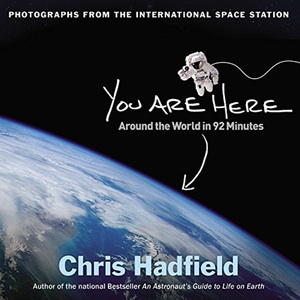Review: You Are Hereby Jeff Foust
|
| Hadfield writes that he took 45,000 photos during his five months on the station, and after returning “promptly came across about a thousand that I wished I’d posted online.” |
That was the impetus for this book, which features 150 color photos, most of which, he writes, he has not previously published online. They are organized geographically, to provide the reader with an equivalent of a single, idealized orbit of the Earth, starting in Africa and going to Europe, Asia, and Oceania before ending in North and South America.
The photos include brief captions, but otherwise Hadfield lets the photos speak for themselves. He mixes in natural landscapes with cityscapes and other creations of humanity. Some images appear serendipitous, while others were meticulously planned: Hadfield writes how he worked with the Snowbirds, the Canadian military’s aerobatics team, to capture an image of them in flight over British Columbia.
Hadfield tries to be clever with some of his imagery: the abovementioned Snowbirds photo was titled “It’s a plane” after one on a facing page, of a lake in Oklahoma that resembled a bird, titled “It’s a bird.” Hadfield has a particular fascination with “pareidolia,” the ability of people to perceive the shapes of particular objects in things like clouds, or, here, landforms seen from space. Besides the bird-shaped lake in Oklahoma, Hadfield points out other such similarities, from an Australian beach that looks like the lower jaw from a skull to swirling rock formations in an Iranian desert that resemble Jupiter’s Great Red Spot.
You Are Here is a light read: you can easily get through its two hundred pages in an hour or so. Or, maybe not, if the images make you linger. While such images of the Earth are increasingly easy to find, thanks to the Internet and social media, there is still value in a thoughtful presentation in a higher quality format. And, after a week of failures and tragedy in the space business, the book offers another reminder of what makes spaceflight so compelling to people willing to accept the risks inherent with it.
